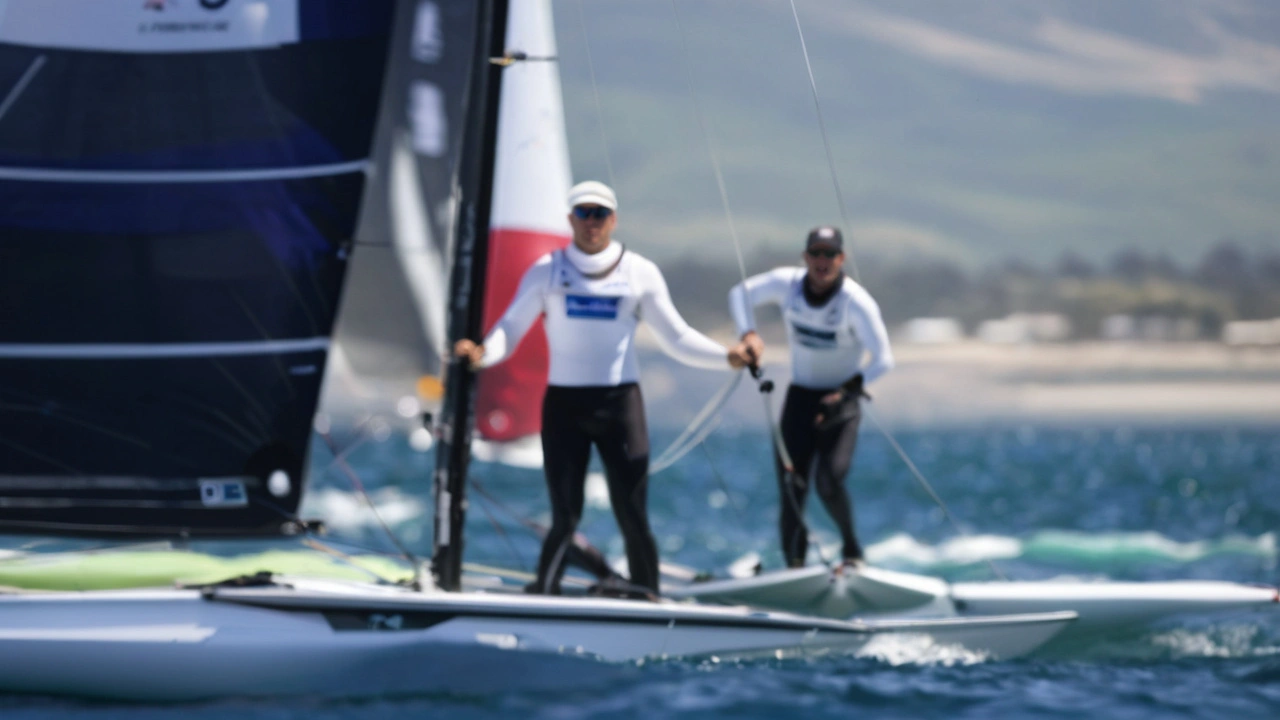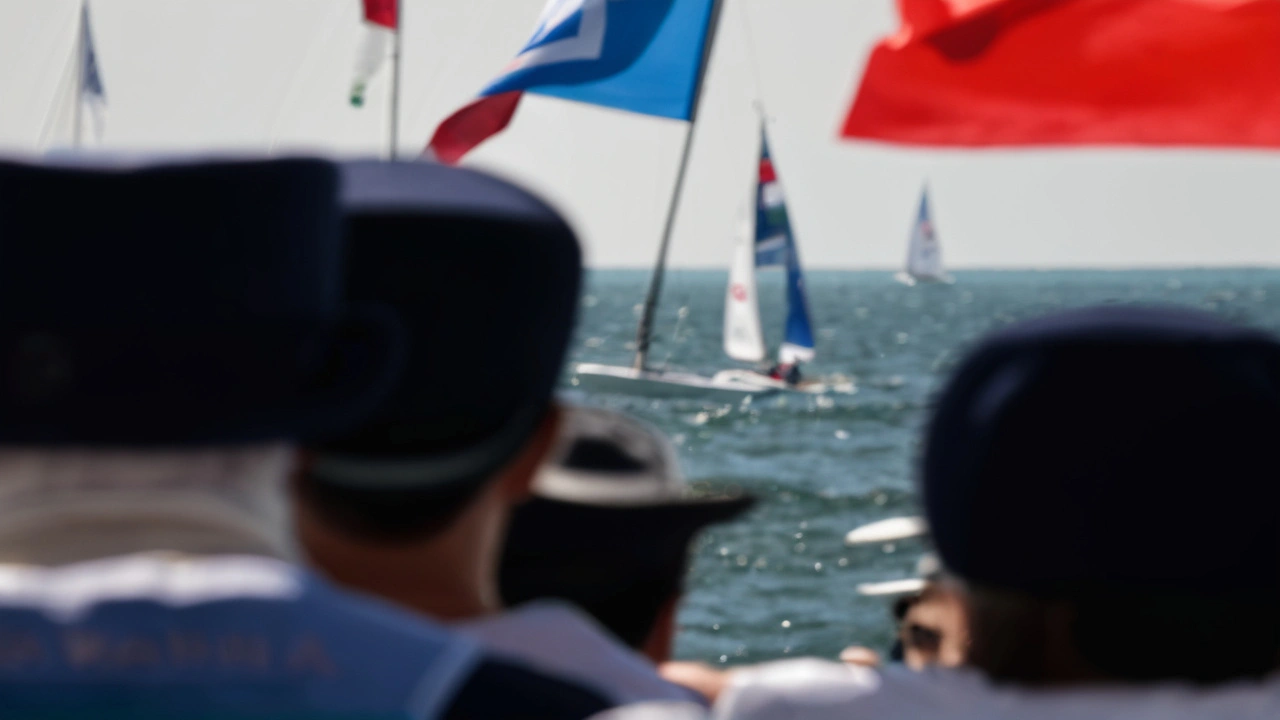Introduction: The Exciting World of Olympic Sailing
Olympic sailing might seem complicated to the uninitiated, but it’s a world filled with excitement, strategy, and nuances. Imagine it like attending a delicious buffet with an array of dishes, each requiring a different palate. This guide aims to demystify the intricacies of Olympic sailing, making it accessible and enjoyable for new spectators. By breaking down the sport into digestible lessons, you will understand the competition and appreciate the skill and strategy involved.
Lesson 1: The Start of the Race
The beginning of any Olympic sailing race is a spectacle in itself. There's a 5-minute countdown that all competitors follow, during which they maneuver for the best possible position along the start line. This line is typically set perpendicular to the wind and consists of two ends: the 'pin end' and the 'committee boat end.' The trick lies in choosing the perfect starting spot based on both the course's bias and the ever-changing wind conditions. Sailors need to be strategic because sailing boats cannot head directly into the wind. Instead, they zigzag, or 'tack,' toward the first mark. The skill in this maneuvering is where much of the race is won or lost.
The excitement builds as the clock ticks down, and when the signal is given, boats burst forward. It's a blend of precision, timing, and nerve that sets the stage for the race ahead. Understanding this crucial phase will already give you a greater appreciation of the sport.
Lesson 2: Weather Conditions and Race Delays
Weather is an integral part of sailing. Unlike many other sports, sailing cannot proceed without favorable wind conditions. If the wind is too light (below 5 knots), boats struggle to move. Conversely, winds exceeding 30 knots can be too treacherous for a safe race. Often, races are delayed or postponed entirely due to these conditions. A steady and reliable wind is necessary to set a predictable course and ensure fair competition. It's fascinating to see how sailors adapt to these changing elements, and understanding the impact of weather conditions adds another layer to the sport.
Lesson 3: The Enigmatic Spinnaker
One of the most intriguing aspects of sailing is the use of various sails. The spinnaker, often referred to as the 'balloon sail,' is one such sail that captures the imagination. This sail is used under specific conditions, particularly when sailing downwind. It’s large, colorful, and billows out in front of the boat, providing an additional push. It’s not used at all times and can disappear from view, adding an element of surprise and strategy. The choice of when to deploy the spinnaker can significantly impact a boat’s speed and maneuverability.
Lesson 4: Types of Racing in Olympic Sailing
Olympic sailing isn't limited to a single type of race. It includes a variety of formats like fleet racing and medal race. In fleet racing, all competitors start and race at the same time, making it a massive and thrilling event. The medal race, on the other hand, is the finale, featuring the top sailors. This race is shorter and more intense, with higher stakes as it determines the final standings and ultimately, the Olympic medals.
A standout class in Olympic sailing is the iQFOiL windsurfing, which showcases different formats based on prevailing weather. In light winds, competitors engage in a Sprint Slalom, a fast-paced race with quick tacks and jibes. When the wind picks up, traditional fleet racing takes over. There’s also the Marathon course, a grueling long-distance race that tests endurance and strategy. The final day sees a knockout format, where the top 10 sailors battle it out in a series of elimination rounds, making for a gripping climax.
Lesson 5: Scoring and Penalties
Understanding the scoring system in Olympic sailing is crucial to following the competition. Points are awarded based on finishing positions in individual races, with the goal being to accumulate the lowest score. Each race awards points in ascending order from the first-place finisher to the last. For example, if a sailor finishes first, they receive 1 point, second place gets 2 points, and so on. The sailor with the lowest cumulative score at the end of the series wins.
There are also penalties to consider. Infractions like causing a collision or failing to give way to another boat can result in penalty points. These add to a sailor's total score, which they want to keep as low as possible. This scoring system creates a dynamic where consistency and adherence to rules are as vital as speed and skill.
Lesson 6: The Role of Technology
Modern Olympic sailing is a synergy of athleticism and technology. Advances in boat design, materials, and even digital tracking systems play a significant role. Boats are crafted to be incredibly lightweight yet durable, maximizing speed and maneuverability. Sailors use onboard instruments to monitor wind speed, direction, and other crucial data points in real-time. This tech allows for strategic decisions to be made on the fly, showcasing the blend of skill and technology in the sport.
Lesson 7: The Importance of Teamwork
While sailing might seem like an individual sport, teamwork is vital. In multi-handed classes, where boats have more than one sailor, coordination is key. Each member has specific roles and responsibilities, from handling sails to steering and navigating. Effective communication and split-second decision-making can be the difference between winning and losing. Even in single-handed classes, sailors rely on support teams for boat maintenance, strategy planning, and psychological support.
Lesson 8: The Olympic Spirit in Sailing
At its core, Olympic sailing embodies the Olympic spirit of excellence, friendship, and respect. Sailors come from diverse backgrounds, united by their passion for the sport. The camaraderie, mutual respect, and shared love for the sea create a unique atmosphere. While competition is fierce, there’s a strong sense of sportsmanship and mutual admiration among sailors. Understanding this spirit adds emotional depth to the technical aspects of the sport.

Conclusion: Embracing the Sport of Olympic Sailing
With these eight bite-sized lessons, you're now equipped with the knowledge to appreciate Olympic sailing fully. From the strategic start of the race to the role of weather, and the complex scoring system, every aspect of the sport is intriguing. As you watch the next Olympic sailing event, you’ll find yourself more engaged and informed, enhancing your spectator experience. The world of Olympic sailing awaits, filled with excitement, strategy, and the enduring spirit of the Olympics.





Write a comment